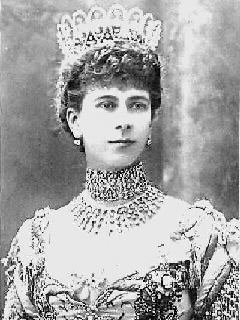Everybody loves a mystery! And no one better than the violet fancier of the XXI century!
So, join the hunt. See if you can find 'Princess Mary" hiding in
some forgotten place. Perhaps you help to rescue her from oblivion.
John
Whittlesey, AVS Horticultural Advisor (USA) and owner of Canyon Creek
Nursery (California) has brought to our attention that spring is the
right time of the year to continue our work tracking down 'lost"
violets. With violets blooming everywhere, we have the opportunity to become
observant gardeners and closely inspect, photograph and take notes about the
violet varieties that show up in our gardens, our grandmother's, our
neighbor's, the local, old public gardens and most particularly, the
abandoned cemeteries.
It's well known that a number of violet cultivars of years past have
disappeared from the European market and beyond. It's also accepted that the
two successive wars in the first fifty years of the century, in addition to
high costs of cultivation, the scarcity of knowledgeable farmers, new
fashions in the area of flowers and subsequent lack of demand have greatly
contributed to this situation. There is, however, good reason to believe
that many of these "lost" varieties might have survived in
private, long forgotten gardens and collections.
These days, thanks to a renewed interest in heirloom flowers in general and
violets in particular, and the work of aficionados and developers, several
"lost cultivars" have been located and brought forward as
"heirloom violets.' Case in point is the 'King of the Doubles'
rediscovered in Australia and once again available to us.
Ladies and Gentlemen: there's a new challenge before us! Let's talk about:
The case of the Missing 'Princess Mary'
 |
Mary,
Princess
of Wales |
Named after Princess Mary of Wales who became Great Britain's beloved
Queen Mary, this large, lovely semi-double violet was very popular in
the early part of the 20th century and considered by many to be the finest
of its type. Mrs. Grace L. Zambra, owner of the legendary Windward Violet
Farm (Dawlish, Devon), and author of "Violets for Garden and
Market" (1950) describes the 'Princess Mary' as:
"the best seedling raised from Princess of Wales. It has large,
semi-double flowers, is a splendid grower...[it] has all the merits of its
parent, with the extra little rosette of petals arranged round its pistils.
It should be of intense violet-blue throughout, but the centre varies in
some districts and becomes shaded. It is a beautiful flower with delicate
perfume."
As
of press time, we are expecting and very shortly, a rare photographic
rendition of 'Princess Mary'. In the meantime, and as a first phase of this
investigation, we are featuring Miss Dora Ratman's lovely illustration of
the 'Princess Mary' as Exhibit 1.
It's our hope that through the efforts of all violet enthusiasts around the
world we can locate this beautiful violet, and bring it forward to enjoy it
once again!
Should you have any clues, believe you have found this violet, or have any
other comment to add to this review, please write us at:
PrincessMary@americanvioletsociety.org
Thank you and happy violet sleuthing!